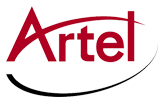The industry has been talking about remote production for a while, and for good reason. The conventional live production model, in which you send a team and equipment to the venue, can be costly in terms of both time and money. Travel is expensive not only because you need to pay for transportation and lodging, but also because the human and technical resources are tied up all that time and unavailable for any other production. As a result, you’re limited in the frequency and number of events you can produce.
Remote production solves many of these issues. While you still send a team to the venue, you can keep specialized staff and equipment in a central location, available to support multiple events throughout the day. With the emergence of COVID-19, and the need to shift to distancing and remote work scenarios, the appeal of remote production has become even greater.
IP is a key enabler of remote production applications, as it supports transport of both audio and video, as well as the data, communications, and control signals critical in the production environment. Oftentimes, the challenge lies in connecting two remote sites, each with its own media-over-IP infrastructure but lacking the IP switching and Precision Time Protocol (PTP) implementation essential to preserving timing and synchronization across both sites.
PTP specifies a methodology for synchronizing devices to a single shared clock across packet-based networks (using SMPTE ST 2110 and AES67), including Ethernet switches and IP routers. Creating a common time base for multiple AV sources, PTP enables synchronization of device clocks to within nanoseconds, even across a large network.
Because PTP is sensitive to delay, the best way to maintain synchronization across the transport network connecting two sites is to deploy PTP generators at each site. (Some facilities do continue to use SDI transport to sidestep this requirement, using IP solely for control, management, and monitoring.)
Working with Artel solutions, the resulting topology would typically include a PTP generator, Quarra PTP Ethernet switch, and SMART Media Delivery Platform at each site. The signal flow therefore is PTP Generator 1 —Quarra — SMART — fiber — SMART — Quarra — PTP Generator 2.
Connected to the PTP generators, Quarra switches leverage a high-end internal timing circuitry to minimize time drift and maintain highly accurate timing synchronization. The Quarra switch family also supports QoS and traffic management and delivers benefits including fast power-up, an intuitive GUI, and straightforward provisioning and configuration.
Each Quarra switch connects to the SMART Media Delivery Platform, a four-channel auto-sense 3G/HD/SD-SDI-over-IP multi-function gateway with an integrated nonblocking Layer 2/3 switch. The platform attaches seamlessly to the IP network without the need for external network elements. Like Artel’s Quarra switches, the platform provides future-proof capabilities and supports smooth growth as the end user’s network evolves.
The signal flow in this model is basic, and the components install simply. Even more important, synchronization is maintained across the two sites, ensuring proper handling of audio and video throughout live production. With this problem solved, production teams can focus their time and energy on other aspects of creating a great show using a collaborative remote workflow. The entire organization — and viewers too — benefit from this at-home production model, which increases not just efficiency, but also the expertise and technical resources that can be dedicated to multiple live broadcast events.

